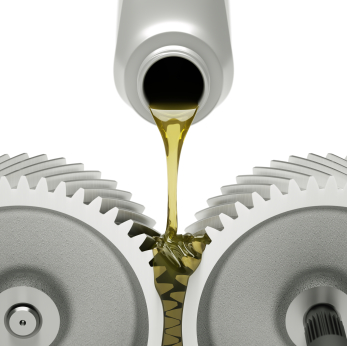When you say it factors into the VI of the oil does that mean where the base oil viscosity begins at 40 c? Seeing that the VII is not a factor at 40 c. or at least that is where the cross point happens? From this video when you talk about 4 cSt base oil you are really talking about 22 cSt at 40 c with the conversion. But the starting point is actually at 40 c to get to the 100 c with the base oil VI and finished oil VII for the running viscosity. Just the way I see it but just my view.
You are confusing and conflating things here:
VII - Viscosity Index Improvers, these are your polymers (plastic) slinky chains that expand with heat, and contract with cold, to reduce the rate of change inherent to the oil's natural viscometric characteristics. Remember, ALL oils thicken as they cool, and thin as they heat. VI Improvers affect the rate of change of that curve, preventing the oil from thinning to what it would otherwise be at that temperature, and contracting as the oil cools, which prevents the oil from getting as thick at a lower temperature that it would otherwise be, relative to its hot viscosity.
VI - Viscosity Index: This is a calculated value based on viscosity measured at 40C and 100C. This is the natural rate of change of the base oil's tendency to thicken as it cools and thin as it heats. A higher VI, the less the oil thickens as it cools, and the less it thins as it heats. PAO base oils have VI's around 140 for example, while we regularly see finished products with VI's approaching 200, which is the result of the impact of VII polymers on that tendency.
Viscosity Calculators, like the Widman one, use the 40C and 100C numbers, the same ones we use to calculate VI, to plot viscosity with temperature. We know that these stop being accurate below 0C. This is because wax crystal formation in bases that aren't PAO, start having an impact on viscosity, driving it up. While we can mitigate this tendency somewhat, and push it down further using PPD's (Pour Point Depressants) ultimately, wax crystals will form at some point and the oil will begin to gel and eventually won't be able to pump (if it isn't PAO).
J300:
As
@RDY4WAR noted, 40C visc does not show up anywhere on here. The grades are all defined at 100C.
A 4cSt base is the bottom end of the SAE 8 grade. A 4cSt base is used because it has good cold temperature performance, but sacrifices volatility and will of course require more VII to hit our 100C hot target, say 9.3-12.5cSt if we are shooting for a 0w-30.
Base oils are sold and labelled by their 100C visc. Mobil's SpectraSyn 6 for example, is a 6cSt nominal PAO base (at 100C).






